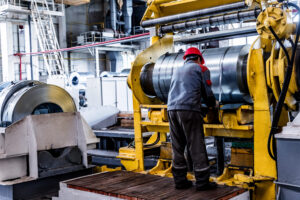
With modern and enhanced technologies in consumer electronics, the Printed Circuit Board field is growing very fast.
The growth in the industry is driven by better manufacturing strategies, demand for smart devices, the need for energy-efficient electronics, and the need for green PCB manufacturing.
Some of the great innovations include rapid prototypes. This is an excellent technique used to create a model of a physical part using 3-dimensional computer-aided design. Another great innovation that has transformed the PCB industry is CNC machining. It is a manufacturing process where pre-programmed software controls the movement of the production system.
With these and many other inventions, the PCB industry has transformed for the better. Below are PCB manufacturing trends that will shape the future of electronics in 2022 and beyond.
PCB manufacturing trends that you must know in 2022
1. High-Density Interconnect PCBs
Printed Circuit Boards technology has evolved from single-sided and double-sided PCBs to multilayer PCBs and Flex PCBs. Now, the new trend is High-density interconnect PCBs or HDI PCBs. HDI refers to a board with a higher wiring density.
HDI PCBs have become some of the fastest-growing technologies in the PCB field due to their numerous benefits. There is space reduction, diameter reduction, and line reduction with this new trend. HDI PCB enables the placement of lesser layers on the board and boosts signal transmission speed.
HDI PCB allows numerous elements in a small board since it can be populated on both sides of the board. Hence, it provides smaller and lightweight PCBs and decreases power usage due to its long battery life.
Benefits of High-Density Interconnect PCBs
*HDI PCBs are perfect where space, weight, reliability, and performance are the primary concerns.
*The mixture of buried vias, blind vias, and micro vias provides the circuit board space requirement.
*Compared to the standard PCBs, high-density interconnect PCBs provides better signal integrity.
*HDI PCBs are reliable against extreme environmental conditions.
*HDI PCBs are cost-effective. A standard PCB can be reduced to an HDI board without compromising the quality.
Applications of HDI PCBs
Healthcare – HDI PCBs play an essential role in the medical industry. They can fit in small devices such as monitoring devices, diagnosing equipment, and many others.
Smartphones and tablets – modern smartphones and tablets are HDI PCBs. They are responsible for creating smaller and more portable electronic devices.
Automotive – since car manufacturers prefer smaller PCBs to save space in the car, HDI PCBs play a vital role in the automotive industry.
Wearable technology – HDI PCBs have become a significant stakeholder in wearable technology. Apple Watch and many wearable devices such as VR headsets are HDI PCBs.
2. Flexible PCBs
Innovation of flexible PCBs has changed the size, shape, weight, and design of electronics. Flexible printed circuit boards are designed to enhance flexibility and to have a smaller mounting design.
A flexible PCB can be curved and moved without damaging the conductor. You can find single-sided flexible PCBs, double-sided flex PCBs, multilayer flex PCBs, and rigid-flex PCBs.
They are mainly used in commercial electronics such as smart devices, printers, scanners, automotive, medical gadgets, and aerospace.
Benefits of Flexible PCBs
*Due to their flexibility, they are used in a wide range of products across sectors.
*They are smaller in size compared to rigid PCBs.
*Flexible PCBs are reliable because there is less risk of wire connection failure
*They are suitable for harsh environments due to their good temperature range.
Applications of Flexible PCBs
Commercial electronics – Flex PCBs have become essential with the market moving to smaller and more advanced devices. They are found on printers, smart devices, scanners, and many others.
Automotive – another sector for flexible PCBs is automotive. THERE ARE MANY AUTOMOTIVE GADGETS FOR FLEX PCBs, from GPS to rearview cameras to climate control gadgets.
3. High Power Boards
At present, there is a high demand for higher power boards. This is because most modern devices are leaning towards a higher power. Hence, the invention of High Power Boards has gained popularity in various sectors.
High Power Printed Circuit Boards are PCBs made of heavy copper. Due to the high copper, they can handle higher rates compared to the standard PCBs. In addition, they can resist higher temperatures for prolonged periods.
There are various types of high-power PCBs on the market, including double-sided high-power PCBs, rigid-flex high-power PCBs, and multilayer high-power PCBs.
Benefits of high power boards
*High power boards are well designed to resist thermal fluctuations.
*Due to heavy copper, high power boards can efficiently conduct high currents.
*High power PCBs have better mechanical strength than standard PCBs.
*Since they are small in size, they help decrease product size.
Applications of high power boards
*Solar power distribution
*Industrial application
*Military application
*Aerospace industry
*Satellites
4. Biodegradable PCBs
Even though electronic devices are designed to simplify life, they come with a significant environmental threat. Most devices are made with a reduced lifespan. Hence, they need to be thrown away after some years of usage.
According to numerous studies, PCBs contribute a lot to releasing toxic substances into the environment. Hence, PCB manufacturers are designing printed circuit boards that are biodegradable. Biodegradable PCBs are manufactured in a way that, when exposed to water, they break down within 10 minutes.
Biodegradable PCBs are manufactured from wheat gluten, banana stems, or chicken feathers. Also, the manufacturers are trying and testing different methods to assemble and manufacture partially biodegradable PCBs and completely biodegradable PCBs.
Conclusion
These are some of the top PCB manufacturing trends that will shape the electronic industry in 2022 and beyond. Also, the trends will continue the development of PCB manufacturing technology.
Also, the future of the printed circuit board industry will be shaped by product miniaturization and performance. And being environmentally mindful and checking production expenses, the future of the PCB industry is expected to continue making life simpler. Hence, smaller, reliable, lighter, and environment-friendly printed circuit boards will be produced in the future.
Read more:
PCB manufacturing trends that you must know in 2022






